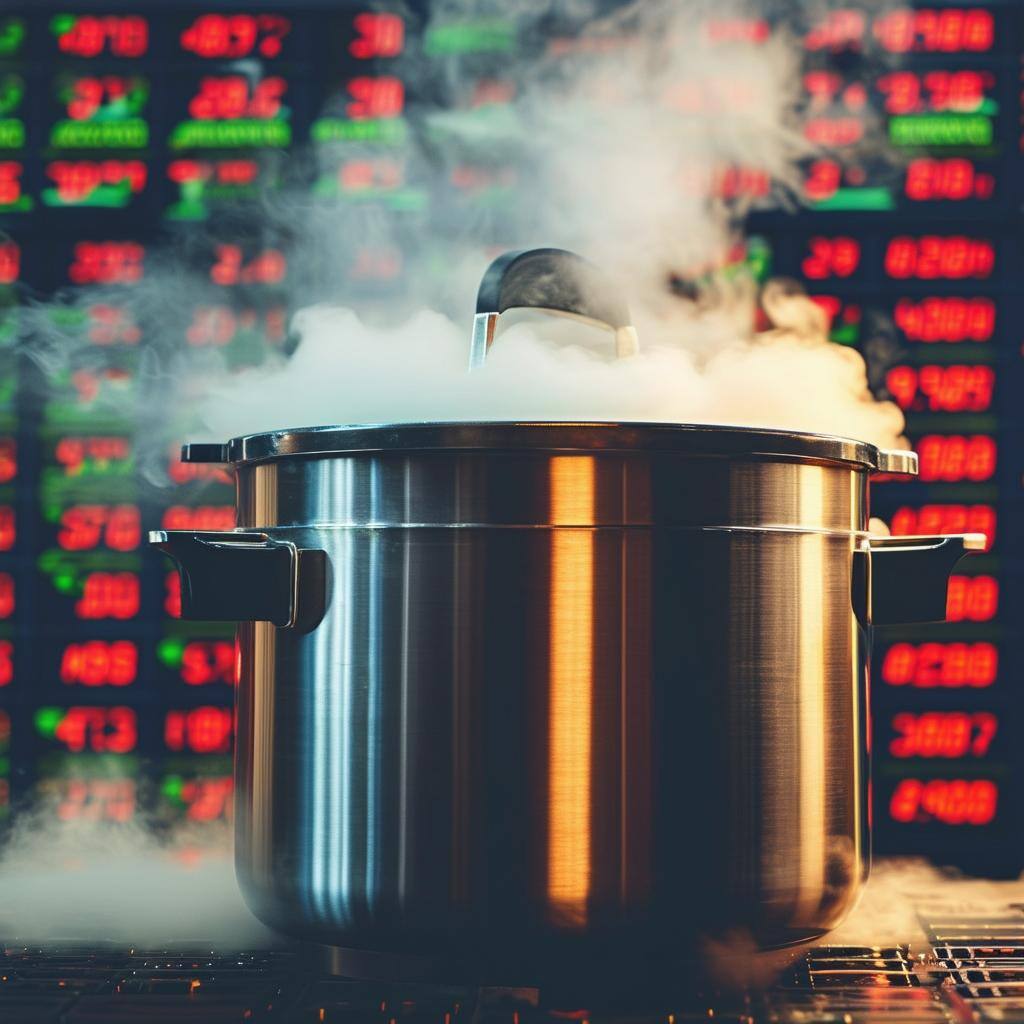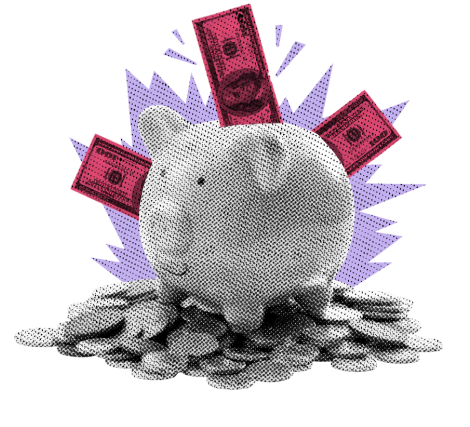
Markets hate uncertainty, and the latest tariff news just dialed it up to eleven. Here’s what it means for investors.
KEY TAKEAWAYS
- Trump’s tariff announcements initially sent markets lower, but Mexico negotiated a 30-day delay.
- China responded with countermeasures, including tariffs on U.S. oil and agricultural equipment and an antitrust probe into Alphabet.
- Trade wars are inflationary, complicating the Fed’s ability to cut rates, even if the economy slows.
- The last major trade war (2018-2019) saw elevated market volatility and a choppy economic environment.
- Investors should prepare for heightened uncertainty and increased market volatility.
MY TAKES
- The market loves certainty—even bad certainty is better than constant guessing.
- Trump’s tariff strategy might be more about negotiation than economic policy, but it still shakes investor confidence.
- The Fed’s vacation plans just got canceled—tariffs could reignite inflation and keep rate cuts off the table.
- China’s retaliation is measured for now, but a full-blown trade war would be a major risk factor.
- Investors need to brace for higher volatility, but sticking to a core strategy is key.
Blog Post for February 4, 2025
Uncertainty is certain. I saw an interesting meme this morning which read something like “RIP 2025 Trade War, February 3, 2025 – February 3, 2025.” If you read my note yesterday, you know that I spent the better part of my weekend researching and cavorting with my peers on the exact impacts of the Trump Administration’s first “salvo” of what was sure to become a trade war which would see 25% tariffs levied on Canadian and Mexican imports along with 10% tariffs on Chinese goods and Canadian energy imports, kick in today.
The street, economists, and just about everyone came up with a unanimous decision: tariffs are not a good thing. In fact, the President himself has acknowledged that there would be pain for Americans, waving it off as being worth it. And the pain came quickly with stocks taking a beating yesterday morning. Then suddenly, almost expectedly unexpected, Mexico’s President announced that the President agreed to delay tariffs for 30 days. Equities rallied almost to breakeven at one point in response to the good-ish news.
“So that’s it,” I thought, “here we go again." This had all the markings of Trump’s first Presidency with shock and awe maneuvers. We know that those maneuvers, though well intentioned, had very little effect on the overall benefits for the US economy. So, here we are nearly seven years later, and we are seeing the same play being run by the new administration.
As I did my homework over the weekend, I kept thinking “why would President Trump, a man of business, do something so potentially painful to the US economy, US businesses, and the stock market, all things, we know he holds dear?” I thought that surely this had to be part of a bigger negotiation, and that the market fallout that was sure to come yesterday morning might become a buying opportunity. I penned a few long notes, recorded 2 videos, and 1 podcast on the downsides of tariffs, hoping to educate on how tariffs and trade wars ACTUALLY work. Then, as my long day was winding down, I received a text from a colleague that simply read “Trump 2-0.” I knew what that meant in an instant: Canada made concessions and would receive a 30-day reprieve. My first thought was, “thanks for blowing up my weekend, Mr. President.”
Ok, message received. I woke up this morning 3:30 AM to check the markets and get my day underway, and I found that China had launched a counterpunch to the US’ 10% tariffs that are now in effect. Oh yeah, China. China returned fire with a measured 15% tariff on select US petroleum products, a 10% tariff on US oil and agricultural equipment. Those tariffs will kick in later this month, leaving a window open for negotiations. China also announced that it would open an investigation into Alphabet allegedly violating antitrust laws. Now, that is not insignificant, and it will certainly have an impact on certain stocks today.
Will we hear the same story ending with China as with Canada and Mexico? I think that its far too early to tell, and I can tell you that a re-flaring up of 2018’s trade war with China would certainly not be welcomed by any of the economy, the markets, or consumers.
That brings me to the Fed. I am pretty sure that last Fall, FOMC members began to plan their 2025 family vacations, dreaming about their yet-unwritten memoirs of how they tackled the inflation flareup of a generation. But alas, that dream soon vaporized as then-candidate Trump’s presidential prospects rose. It was clear—as far back as last October, that the markets viewed a Trump 2.0 Presidency as inflationary and deficit-swelling. Both of those would mean that the Fed would have its hands full once again.
Here we are, but a few weeks into President Trump’s second term, and we are already on the brink of another possible trade war. So, what is an FOMC member to do? We learned last week that the President would not be shy about signing executive orders with arguably draconian numbers. Threats turned into reality over a three-day period. Tariffs are inflationary, in case you didn’t get the memo. All of these trade flareups, if they ever go into effect, would cause still-sticky inflation to jump higher and cause a drag to economic growth. Well, if the economy falters, the Fed can get back to rate-cutting right? Wrong! You forgot about inflation, which is still high enough without any tariffs to keep the Fed on hold with its rate cutting. The Fed would certainly not be able to cut if inflation re-ignited.
Back in 2019, the Fed was cutting interest rates, if you recall. The economy was slowing down and there was a corporate earnings recession. A trade war with China was in full swing. Inflation was… slightly elevated but tame; inflation was not a concern. Today, inflation is still very much a concern. Let’s just say, that it is likely that some FOMC-member family vacations have already been put on hold.
What can all this mean for investors going forward? I think it is fair to say, based on the events over the past several days, that we are about to enter a new phase of uncertainty—both positive and negative, but uncertainty, nonetheless. Do you know what the markets’ favorite comfort food is? Certainty, good or bad.
If we look at the VIX Index, which is a measure of S&P500 volatility, in the years leading up to Trump’s last presidency through the start of the pandemic, we note a steady decline with minimal spikes leading up to 2018 which ushered in a 2-year era of elevated average VIX levels with not a single print below 10. Bear in mind that the Fed was raising interest rates at the time and fears of further cuts ignited stiff selloffs and volatility spikes, but even once the Fed notably pivoted in the final days of 2018, the VIX remained elevated. What is my point here? It seems that we are in for another period of increased volatility. During periods of high volatility, it is critical for investors to remain calm, stick to their core investing strategies, and keep a long-term focus. In fact, those are always sage words to live by, regardless of market regime.
YESTERDAY’S MARKETS
Stocks closed in the red after an emotional day which saw traders traverse from panic to hope, overshadowed with confusion. Tariffs and their costs drove AM selling while concessions from Mexico and a delay drove a short-lived recovery.

NEXT UP
- JOLTS Jobs openings (December) is expected to come in at 8 million, slightly lower than the prior month’s 8.1 million vacancies.
- Factory Orders (December) is expected to have declined by 0.8% after a 0.4% slip in November.
- Durable Goods Orders (December) probably declined by 2.2% in line with earlier estimates.
- Fed speakers today: Bostic, Daly, and Jefferson. Pro tip: don’t ignore these speakers. Central bankers love to talk, and they are not shy about their opinions on rate policy. Hint, they have been talking rather un-dovishly since last month’s FOMC meeting.
- Key earnings today: Pfizer, PepsiCo, Estee Lauder, Merck, Regeneron, Apollo Global Management, PayPal, AMD, Snap, Simon Property Group, Alphabet, Enphase Energy, and Amgen.
.png)

